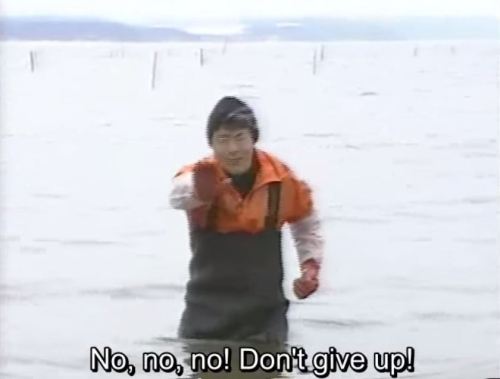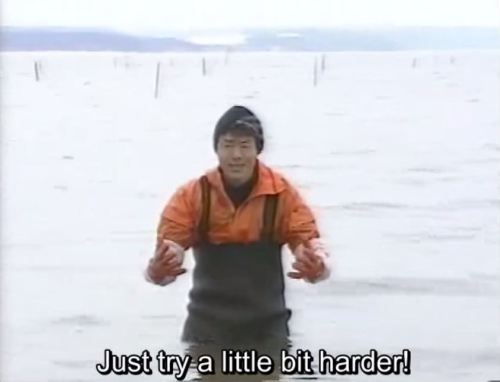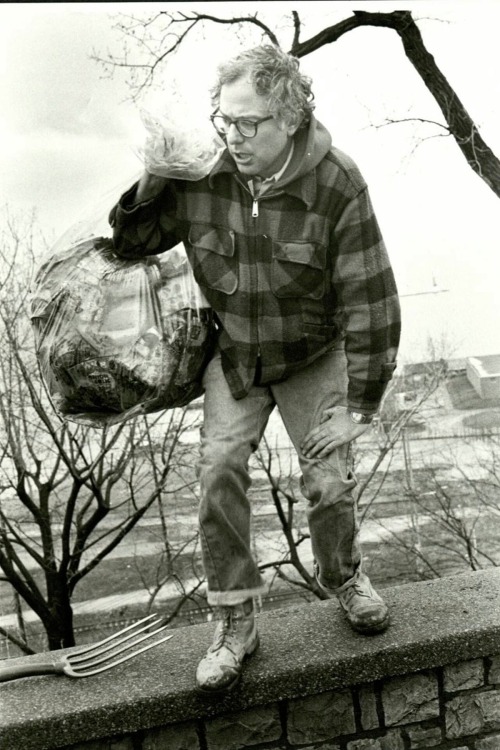258 posts
Latest Posts by smparticle2 - Page 6










The Landscapes and Skylines of Howl’s Moving Castle ハウルの動く城






Ad Astra, John Glenn (1921-2016)
An astronaut.
A pilot.
A husband.
A father.
A United States Senator.
An American hero.
An original.

John Glenn (1921-2016) was all those things and more. When he rocketed into space on Feb. 20, 1962, to become the first American to orbit Earth, the flight set the nation on course to meet ever-more ambitious goals.
The life and career of Senator Glenn eclipses those of many. In spite of his accomplishments, he was a humble and gracious man (and 4-term U.S. senator).
During Glenn’s first flight, a scheduled 30-minute test to determine whether Glenn could fly the capsule manually became a matter of life and death when the automatic system malfunctioned after the first orbit.

“I went to manual control and continued in that mode during the second and third orbits, and during re-entry,” Glenn recalled later. “The malfunction just forced me to prove very rapidly what had been planned over a longer period of time.” Another problem seemed even more serious – telemetry indicated the spacecraft’s heat shield was loose. It seemed possible that Glenn and the spacecraft would be incinerated on re-entry. Glenn left the retrorocket pack in place to steady the heat shield during re-entry. “It made for a very spectacular re-entry from where I was sitting,” he said. Big chunks of the burning material came flying by the window.

He wasn’t sure whether the flaming debris was the rocket pack or the heat shield breaking up. “Fortunately,” he told an interviewer,“ it was the rocket pack – or I wouldn’t be answering these questions.”

In the words of President Obama, who awarded him the Presidential Medal of Freedom in 2012: “When John Glenn blasted off from Cape Canaveral atop an Atlas rocket in 1962, he lifted the hopes of a nation. And when his Friendship 7 spacecraft splashed down a few hours later, the first American to orbit the Earth reminded us that with courage and a spirit of discovery there’s no limit to the heights we can reach together. With John’s passing, our nation has lost an icon and Michelle and I have lost a friend. John spent his life breaking barriers, from defending our freedom as a decorated Marine Corps fighter pilot in World War II and Korea, to setting a transcontinental speed record … The last of America’s first astronauts has left us, but propelled by their example we know that our future here on Earth compels us to keep reaching for the heavens. On behalf of a grateful nation, Godspeed, John Glenn.”

Glenn left the Astronaut Corps in 1964 and resigned from the Marine Corps in 1965. And, after some time in private industry ran for and was elected ti the U.S. Senate in 1974, carrying all 88 counties of Ohio. He was re-elected in 1980 with the largest margin in Ohio history. Ohio returned him to the Senate for a third term in 1986. In 1992 he was elected again, becoming the first popularly elected senator from his state to win four consecutive terms. During his last term he was the ranking member of both the Governmental Affairs Committee and the Subcommittee on Air/Land Forces in the Senate Armed Services Committee. He also served on the Select Committee on Intelligence and the Special Committee on Aging. He was considered one of the Senate’s leading experts on technical and scientific matters, and won wide respect for his work to prevent the spread of weapons of mass destruction.

In 1998, Glenn flew on the STS-95 Discovery shuttle flight, a 9-day mission during which the crew supported a variety of research payloads including deployment of the Spartan solar-observing spacecraft, the Hubble Space Telescope Orbital Systems Test Platform, and Glenn’s investigations on space flight and the aging process.
NASA Administrator Charlie Bolden remembers, “Senator Glenn’s legacy is one of risk and accomplishment, of history created and duty to country carried out under great pressure with the whole world watching.”
Today, we honor him for all that he stood for and continues to stand for – grace under pressure, humility, ability, strength.
Godspeed, John Glenn.




In California’s Salinas Valley, known as the “Salad Bowl of the World,” a push is underway to expand agriculture’s adoption of technology. Special correspondent Cat Wise reports on how such innovation is providing new opportunities for the Valley’s largely Hispanic population. Watch her full piece here: http://to.pbs.org/2gLmEga








Glowing crystals can detect, cleanse contaminated drinking water
Tiny, glowing crystals designed to detect and capture heavy-metal toxins such as lead and mercury could prove to be a powerful new tool in locating and cleaning up contaminated water sources.
Motivated by publicized cases in which high levels of heavy metals were found in drinking water in Flint, Mich., and Newark, N.J., a science team led by researchers at Rutgers University used intense X-rays at Lawrence Berkeley National Laboratory (Berkeley Lab) to probe the structure of the crystals they developed and learn how they bind to heavy metals.
The crystals function like miniature, reusable sensors and traps, and are known as luminescent metal-organic frameworks, or LMOFs.
Top performer for detecting and trapping heavy metals
One type of LMOF that the team tested was found to selectively take up more than 99 percent of mercury from a test mixture of heavy and light metals within 30 minutes, according to recent results published in Applied Materials and Interfaces. No other MOFs have performed as well in this dual role of detecting and capturing, or “adsorbing,” toxic heavy metals, the team reported.
Read more.
Your blog is super cool! I have a few questions. How do you get your equipment and chemicals to carry out your experiments? I was just wondering as I'd like to start doing experiments at home. What would be a good experiment to start with also? Sorry if you have already answered these questions
Hey, thanks for the kind words! This is going to be a long answer! Let’s start with equipment:
Keep reading

Researchers identify method of creating long-lasting memories
Imagine if playing a new video game or riding a rollercoaster could help you prepare for an exam or remember other critical information.
A new study in mice shows this link may be possible.
Attention-grabbing experiences trigger the release of memory-enhancing chemicals. Those chemicals can etch memories into the brain that occur just before or soon after the experience, regardless of whether they were related to the event, according to researchers at UT Southwestern Medical Center’s Peter O’Donnell Jr. Brain Institute.
The findings, published in Nature, hold intriguing implications for methods of learning in classrooms as well as an array of potential uses in the workplace and personal life, researchers said.
The trick to creating long-lasting memories is to find something interesting enough to activate the release of dopamine from the brain’s locus coeruleus (LC) region.
“Activation of the locus coeruleus increases our memory of events that happen at the time of activation and may also increase the recall of those memories at a later time,” said Dr. Robert Greene, the study’s co-senior author and a Professor of Psychiatry and Neurosciences with the O’Donnell Brain Institute.
The study explains at the molecular level why people tend to remember certain events in their lives with particular clarity as well as unrelated details surrounding those events: for instance, what they were doing in the hours before the Sept. 11, 2001, terrorist attacks; or where they were when John F. Kennedy was assassinated.
“The degree to which these memories are enhanced probably has to do with the degree of activation of the LC,” said Dr. Greene, holder of the Sherry Gold Knopf Crasilneck Distinguished Chair in Psychiatry, in Honor of Mollie and Murray Gold, and the Sherry Knopf Crasilneck Distinguished Chair in Psychiatry, in Honor of Albert Knopf. “When the New York World Trade Center came down on 9/11, that was high activation.”
But life-changing events aren’t the only way to trigger the release of dopamine in this part of the brain. It could be as simple as a student playing a new video game during a quick break while studying for a crucial exam, or a company executive playing tennis right after trying to memorize a big speech.
“In general, anything that will grab your attention in a persistent kind of way can lead to activation,” Dr. Greene said.
Scientists have known dopamine plays a large role in memory enhancement, though where the chemical originates and how it’s triggered have been points of study over the years.
Dr. Greene led a study published in 2012 that identified the locus coeruleus as a third key source for dopamine in the brain, besides the ventral tegmental area and the substantia nigra. That research demonstrated the drug amphetamine could pharmacologically trigger the brain’s release of dopamine from the LC.
The latest study builds upon those findings, establishing that dopamine in this area of the brain can be naturally activated through behavioral actions and that these actions enhance memory retention.
The new study suggests that drugs targeting neurons in the locus coeruleus may affect learning and memory as well. The LC is located in the brain stem and has a range of functions that affect a person’s emotions, anxiety levels, sleep patterns, memory and other aspects of behavior.
The study tested 120 mice to establish a link between locus coeruleus neurons and neuronal circuits of the hippocampus – the region of the brain responsible for recording memories – that receive dopamine from the LC.
One part of the research involved putting the mice in an arena to search for food hidden in sand that changed location each day. The study found that mice that were given a “novel experience” – exploring an unfamiliar floor surface 30 minutes after being trained to remember the food location – did better in remembering where to find the food the next day.
Researchers correlated this memory enhancement to a molecular process in the brain by injecting the mice with a genetically encoded light-sensitive activator called channelrhodopsin. This sensor allowed them to selectively activate dopamine-carrying neurons of the locus coeruleus that go to the hippocampus and to see first-hand which neurons were responsible for the memory enhancement.
They found that selectively activating the channelrhodopsin-labeled neurons with blue light (a technique called optogenetics) could substitute for the novelty experience as a memory enhancer in mice. They also found that this activation could cause a direct, long-lasting synaptic strengthening – an enhancement of memory-relevant communication occurring at the junctions between neurons in the hippocampus. This process can mediate improvement of learning and memory.
Some next steps include investigating how big an impact this finding can have on human learning, whether it can eventually lead to an understanding of how patients can develop failing memories, and how to better target effective therapies for these patients, said Dr. Greene.
Moonlight


















Pleasantville (1998)
Inspirational!

A schematic synthesis of physics branches by Dominic Walliman, from his video “The Map of Physics”:
Of course Physics become much more tangled when you move to the right side of the map.
h-t Vox: Physics has a dizzying array of subdisciplines. This short video breaks it down. An 8-minute history of the giant field of physics.


David Silverman @tubatron
1st appearance of Milhouse in 1st Butterfinger storyboard 11/18/1988 (missed the anni thing by a few weeks – )






「Howls Moving Castle (2004) {+color palletes} 」insp.









Bringing silicon to life: Scientists persuade nature to make silicon-carbon bonds
A new study is the first to show that living organisms can be persuaded to make silicon-carbon bonds – something only chemists had done before. Scientists at Caltech “bred” a bacterial protein to make the humanmade bonds – a finding that has applications in several industries.
Molecules with silicon-carbon, or organosilicon, compounds are found in pharmaceuticals as well as in many other products, including agricultural chemicals, paints, semiconductors, and computer and TV screens. Currently, these products are made synthetically, since the silicon-carbon bonds are not found in nature.
The new study demonstrates that biology can instead be used to manufacture these bonds in ways that are more environmentally friendly and potentially much less expensive.
“We decided to get nature to do what only chemists could do – only better,” says Frances Arnold, Caltech’s Dick and Barbara Dickinson Professor of Chemical Engineering, Bioengineering and Biochemistry, and principal investigator of the new research, published in the Nov. 24 issue of the journal Science.
Read more.

Warrior of the grassland - Anup Deodhar - The Comedy Wildlife.

Women at work on a C-47 Douglas cargo transport, Douglas Aircraft Company, Long Beach, California, 1943.
via reddit
Sleeping brain's complex activity mimicked by simple model
Researchers have built and tested a new mathematical model that successfully reproduces complex brain activity during deep sleep, according to a study published in PLOS Computational Biology.

Recent research has shown that certain patterns of neuronal activity during deep sleep may play an important role in memory consolidation. Michael Schellenberger Costa and Arne Weigenand of the University of Lübeck, Germany, and colleagues set out to build a computational model that could accurately mimic these patterns.
The researchers had previously modeled the activity of the sleeping cortex, the brain’s outer layer. However, sleep patterns thought to aid memory arise from interactions between the cortex and the thalamus, a central brain structure. The new model incorporates this thalamocortical coupling, enabling it to successfully mimic memory-related sleep patterns.
Using data from a human sleep study, the researchers confirmed that their new model accurately reproduces brain activity measured by electroencephalography (EEG) during the second and third stages of non-rapid eye movement (NREM) sleep. It also successfully predicts the EEG effects of stimulation techniques known to enhance memory consolidation during sleep.
The new model is a neural mass model, meaning that it approximates and scales up the behavior of a small group of neurons in order to describe a large number of neurons. Compared with other sleep models, many of which are based on the activity of individual neurons, this new model is relatively simple and could aid in future studies of memory consolidation.
“It is fascinating to see that a model incorporating only a few key mechanisms is sufficient to reproduce the complex brain rhythms observed during sleep,” say senior authors Thomas Martinetz and Jens Christian Claussen.
This supercapacitor battery can be recharged 30,000 times

A thin, flexible supercapacitor boasts high energy and power densities. Credit: University of Central Florida
Everyone and anyone with a smartphone know it is not long before your phone holds a charge for less and less time as the battery begins to degrade. But new research by scientists at the NanoScience Technology Center at the University of Central Florida (UCF), USA, could change that. The team have developed a new method for producing flexible supercapacitors that can store greater amounts of energy and can be recharged over 30,000 times without degradation. This new method could transform technology such as electric vehicles and mobile phones in the future.
‘If you were to replace the batteries with these supercapacitors, you could charge your mobile phone in a few seconds and you wouldn’t need to charge it again for over a week,’ said University of Central Florida researcher Nitin Choudhary.
The UCF team has attempted to apply newly discovered 2D materials that measure just a few atoms thick to supercapacitors. Other scientists have also tried formulations with other 2D materials including graphene, but had only limited success. The new supercapacitors are composed of millions of nanometre-thick wires coated with shells of 2D materials. The core facilitates the super-fast charging and discharging that makes supercapacitors powerful, and the 2D coating delivers the energy storage ability.
‘We developed a simple chemical synthesis approach so we can very nicely integrate the existing materials with the two-dimensional materials,’ said Yeonwoong Eric Jung, assistant professor of the study. Jung is working with UCF’s Office of Technology Transfer to patent the new process. ‘It’s not ready for commercialisation,’ Jung said. ‘But this is a proof-of-concept demonstration, and our studies show there are very high impacts for many technologies.’

(Image caption: Young neurons (pink), responsible for encoding new memories, must compete with mature neurons (green) to survive and integrate into the hippocampal circuit. Credit: Kathleen McAvoy, Sahay Lab)
Making memories stronger and more precise during aging
When it comes to the billions of neurons in your brain, what you see at birth is what get — except in the hippocampus. Buried deep underneath the folds of the cerebral cortex, neural stem cells in the hippocampus continue to generate new neurons, inciting a struggle between new and old as the new attempts to gain a foothold in the memory-forming center of the brain.
In a study published online in Neuron, Harvard Stem Cell Institute (HSCI) researchers at Massachusetts General Hospital and the Broad Institute of MIT and Harvard in collaboration with an international team of scientists found they could bias the competition in favor of the newly generated neurons.
“The hippocampus allows us to form new memories of ‘what, when and where’ that help us navigate our lives,” said HSCI Principal Faculty member and the study’s corresponding author, Amar Sahay, PhD, “and neurogenesis—the generation of new neurons from stem cells—is critical for keeping similar memories separate.”
As the human brain matures, the connections between older neurons become stronger, more numerous, and more intertwined, making integration for the newly formed neurons more difficult. Neural stem cells become less productive, leading to a decline in neurogenesis. With fewer new neurons to help sort memories, the aging brain can become less efficient at keeping separate and faithfully retrieving memories.
The research team selectively overexpressed a transcription factor, Klf9, only in older neurons in mice, which eliminated more than one-fifth of their dendritic spines, increased the number of new neurons that integrated into the hippocampus circuitry by two-fold, and activated neural stem cells.
When the researchers returned the expression of Klf9 back to normal, the old dendritic spines reformed, restoring competition. However, the previously integrated neurons remained.
“Because we can do this reversibly, at any point in the animals life we can rejuvenate the hippocampus with extra, new, encoding units,” said Sahay, who is also an investigator with the MGH Center for Regenerative Medicine.
The authors employed a complementary strategy in which they deleted a protein important for dendritic spines, Rac1, only in the old neurons and achieved a similar outcome, increasing the survival of the new neurons.
In order to keep two similar memories separate, the hippocampus activates two different populations of neurons to encode each memory in a process called pattern separation. When there is overlap between these two populations, researchers believe it is more difficult for an individual to distinguish between two similar memories formed in two different contexts, to discriminate between a Sunday afternoon stroll through the woods from a patrol through enemy territory in a forest, for example. If the memories are encoded in overlapping populations of neurons, the hippocampus may inappropriately retrieve either. If the memories are encoded in non-overlapping populations of neurons, the hippocampus stores them separately and retrieves them only when appropriate.
Mice with increased neurogenesis had less overlap between the two populations of neurons and had more precise and stronger memories, which, according to Sahay, demonstrates improved pattern separation.
Mice with increased neurogenesis in middle age and aging cohorts exhibited better memory precision.
“We believe that by increasing the hippocampus’s ability to do what it supposed to do and not retrieve past experiences when it shouldn’t can help,” Sahay said. This may be particularly useful for individuals suffering from post-traumatic stress disorder, mild cognitive impairment, or age-related memory loss.












The fight is not over.
follow @the-movemnt

Do you know anyone prone to pleonasm?
Read the full definition here: http://www.dictionary.com/wordoftheday/2016/11/16?param=social

Burlington Mayor Bernie Sanders picks up trash on his own in a public park after being elected in 1981, his first electoral victory
via reddit

Chemists discover structure of bacterial enzyme that generates useful polymers
MIT chemists have determined the structure of a bacterial enzyme that can produce biodegradable plastics, an advance that could help chemical engineers tweak the enzyme to make it even more industrially useful.
The enzyme generates long polymer chains that can form either hard or soft plastics, depending on the starting materials that go into them. Learning more about the enzyme’s structure could help engineers control the polymers’ composition and size, a possible step toward commercial production of these plastics, which, unlike conventional plastic formed from petroleum products, should be biodegradable.
“I’m hoping that this structure will help people in thinking about a way that we can use this knowledge from nature to do something better for our planet,” says Catherine Drennan, an MIT professor of chemistry and biology and Howard Hughes Medical Institute Investigator. “I believe you want to have a good fundamental understanding of enzymes like this before you start engineering them.”
Read more.
